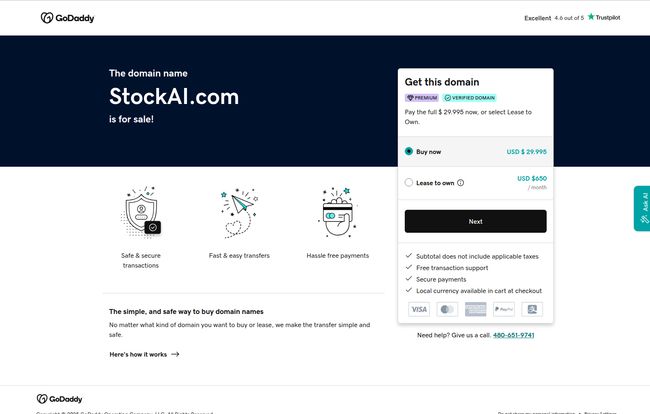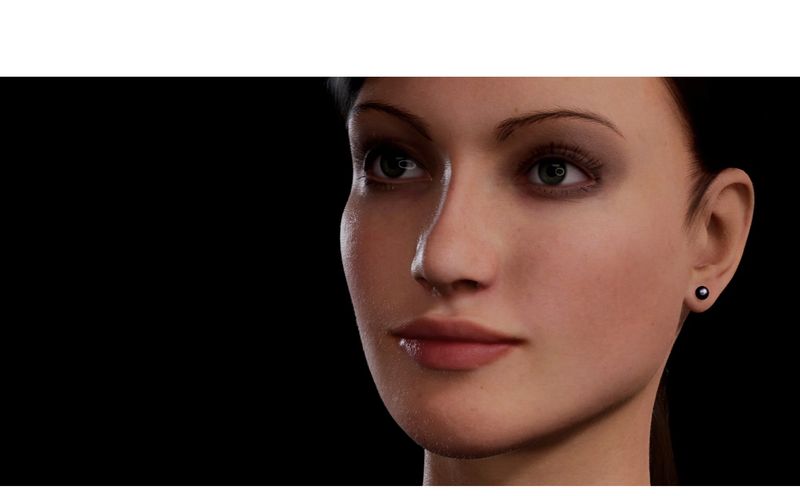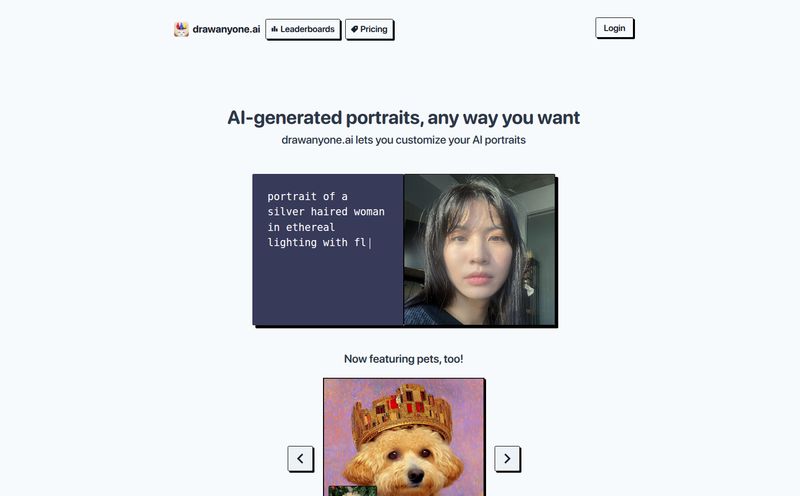It feels like every single day, a new AI tool pops up on my radar. Some are brilliant, some are... less so, and some just vanish into the digital ether. As someone who’s been neck-deep in SEO, traffic gen, and all things digital for years, you start to see patterns. Hype cycles, gold rushes, and the inevitable shakeouts. I was digging around for new AI image platforms to play with, and I stumbled upon a name that sounded promising: Stock AI.
The concept was simple enough, and one I'd seen before: a platform that promised to be the ultimate solution to your visual content woes. No more scrolling through endless pages of cheesy, uninspired stock photos of "business people laughing at a salad." The idea was you could either generate a totally unique image from a text prompt or search through a massive library of images other people had already created. Sounds pretty good, right? So, I went to check it out.
And that's where the story gets weird.
What Was Stock AI Supposed to Be?
Before we get to the mystery, let's talk about the promise. Based on the digital breadcrumbs it left behind, Stock AI was positioning itself as a one-stop-shop for AI imagery. It wasn't just another generator; it was meant to be a comprehensive library too. The engine under the hood was powered by some familiar names—Stable Diffusion and DALL-E 2. These are the models that really kicked off the AI art explosion back in 2022.
The platform’s big pitch was a two-pronged attack on traditional stock photography:
- The AI Art Generator: You type in an idea, a mood, a scene—'a cyberpunk cat DJing in a neon-lit Tokyo alley,' for instance—and the AI would spit out a custom piece of art. The dream of every marketer and blogger on a tight budget.
- The Searchable Database: If you weren't feeling particularly creative or just needed something quick, you could search millions of existing AI-generated images and prompts. This is smart, as it lowers the barrier to entry. Not everyone is a prompt engineering wizard.
Essentially, it was trying to merge the creative chaos of Midjourney with the searchability of a Getty Images. A noble goal, for sure.
The Promised Land of AI-Generated Imagery
Let’s be real, the potential benefits here are obvious, and it’s why so many of us got excited about this tech in the first place. The main draw is creating unique, custom images that perfectly match your content's vibe. For years, we’ve all used the same handful of stock photos. I swear I've seen the same 'woman working on a laptop in a coffee shop' on a thousand different websites. Stock AI, and tools like it, offered an escape from that visual monotony.
It's like having a graphic designer on call 24/7, but one who works for pennies and never needs a coffee break. For small businesses, startups, and solo bloggers, this is a game-changer. The ability to generate a high-quality blog header or a social media graphic in minutes instead of hours (or dollars) is massive. It saves time, it saves money, and it gives your brand a visual identity that isn't shared with half the internet.
The Inevitable Hurdles and Headaches
Of course, it's never that simple. Anyone who's spent more than ten minutes with an AI image generator knows it's not always a walk in the park. There's a definite learning curve. The quality of what you get out is directly tied to the quality of the prompt you put in. I've personally spent an hour trying to get an AI to generate a simple image of a person holding a phone without giving them seven fingers. It can be a frustrating process of trial and error.
And then there's the big, scary monster in the room: copyright. The legalities surrounding AI-generated art are a murky mess. Who owns the image? You? The AI company? Nobody? The U.S. Copyright Office has been pretty clear that works created solely by AI aren't copyrightable by a human, which creates a whole host of issues for commercial use. This is a significant hurdle for any platform calling itself "Stock AI."
So, Where Is Stock AI Now?
This brings me back to the start of my story. I was ready to sign up, test the interface, and see if it could generate a decent-looking seven-fingered man. I typed 'StockAI.com' into my browser, and I was met not with a futuristic AI interface, but with a stark, corporate-blue landing page from GoDaddy.
The domain name is for sale.

Visit Stock AI
Yep. For the low, low price of $29,995 (or a lease of $650 a month), this piece of digital real estate can be yours. This is the digital equivalent of showing up to a grand opening and finding a 'For Lease' sign on the door. It's a ghost town. All the plans, the features, the promise—gone. Replaced by a sales pitch from a domain registrar.
A Cautionary Tale in the AI Gold Rush
What happened? Honestly, we can only speculate. Maybe the project ran out of funding. Maybe the technical challenges were too great. Maybe the founders got spooked by the legal gray areas. Or, and this is my personal theory, maybe they realized the domain name itself was more valuable than the business they could build on it. It happens more than you'd think.
The story of Stock AI is a perfect snapshot of the current AI landscape. It's a bit like the dot-com bubble of the late '90s. There’s a ton of excitement, investment is flowing like water, and brilliant ideas are everywhere. But for every Amazon or Google that emerges, there are a hundred Pets.coms that burn bright and fast before disappearing completely.
It's a reminder that a good idea and access to technology aren't enough. Building a sustainable business requires a solid plan, a clear path to monetization, and the ability to navigate a ferociously competitive market. When you're up against giants like Midjourney and established creative suites like Adobe Firefly, it's a tough mountain to climb.
What Are The Alternatives to the Ghost of Stock AI?
Since you can't actually use Stock AI, where should you go for your AI image needs? The good news is, there's no shortage of fantastic, existing platforms. Here are a few of my go-tos:
| Tool | Best For | My Take |
|---|---|---|
| Midjourney | Highest quality, artistic and hyper-realistic images. | The king of quality, but the Discord-based interface takes some getting used to. Not the most user-friendly for beginners. |
| Leonardo.Ai | Game assets, character design, and fine-tuned models. | A really powerful and versatile platform with a great web UI and a generous free tier. It's my personal favorite for its balance of power and ease of use. |
| Adobe Firefly | Commercially safe images and integration with Adobe products. | Adobe's major selling point is that Firefly is trained on Adobe Stock's library, making it commercially safer than many rivals. It's built right into Photoshop now, which is incredibly handy. |
Frequently Asked Questions About Stock AI
- What was Stock AI?
- Stock AI was a planned platform for generating and searching for AI-created images. It was intended to use technologies like Stable Diffusion and DALL-E 2 to provide an alternative to traditional stock photography.
- Can I still use Stock AI?
- No, you can't. The platform does not appear to be active, and its domain name, StockAI.com, is currently listed for sale on GoDaddy.
- Why would a domain like StockAI.com be so expensive?
- Premium domain names that are short, memorable, and contain high-value keywords (like 'Stock' and 'AI') are considered prime digital real estate. The price reflects its potential brand value for a company in the artificial intelligence or stock media industry.
- What's the main issue with AI image copyright?
- The primary issue is that current laws, particularly in the US, generally require human authorship for copyright protection. Since AI-generated images lack this, they may fall into the public domain, making them difficult to license exclusively for commercial purposes. This is a rapidly developing area of law, though.
- Are there any good free AI image generators?
- Yes! Many platforms offer free tiers. Leonardo.Ai provides a daily allowance of free credits, and Microsoft Designer (using DALL-E 3) is also free to use. They're great for experimenting and learning the ropes.
The Final Frame
The tale of Stock AI is a fascinating one. It's a digital ghost, a reminder of an idea with great promise that, for one reason or another, never made it to the finish line. It encapsulates the wild, unpredictable nature of this technological boom. It’s a bit of a bummer, but also a valuable lesson.
While Stock AI itself may be nothing more than an expensive domain listing now, the idea behind it is very much alive and thriving in other platforms. The revolution against boring stock photos continues, you just have to know where to look. Now if you'll excuse me, I have to go try and create 'a philosopher squirrel contemplating the universe in a tiny armchair.' The work never stops.
Reference and Sources
- GoDaddy Listing for StockAI.com
- U.S. Copyright Office - Artificial Intelligence
- Midjourney Official Site
- Leonardo.Ai Official Site
- Adobe Firefly Information Page



